During the Stone age, our prehistoric ancestors started making simple tools out of stone to hunt, prepare food, make clothes, and build homes. Over millions of years, humans have mastered tool making, but we’re far from the only animals to use tools. Many members of the animal kingdom have brilliantly harnessed tools to help them catch prey, build shelters, keep clean, and even attract mates. And we’re still discovering new animal tools every day. Here are some of the most surprising and ingenious ways that animals use tools.
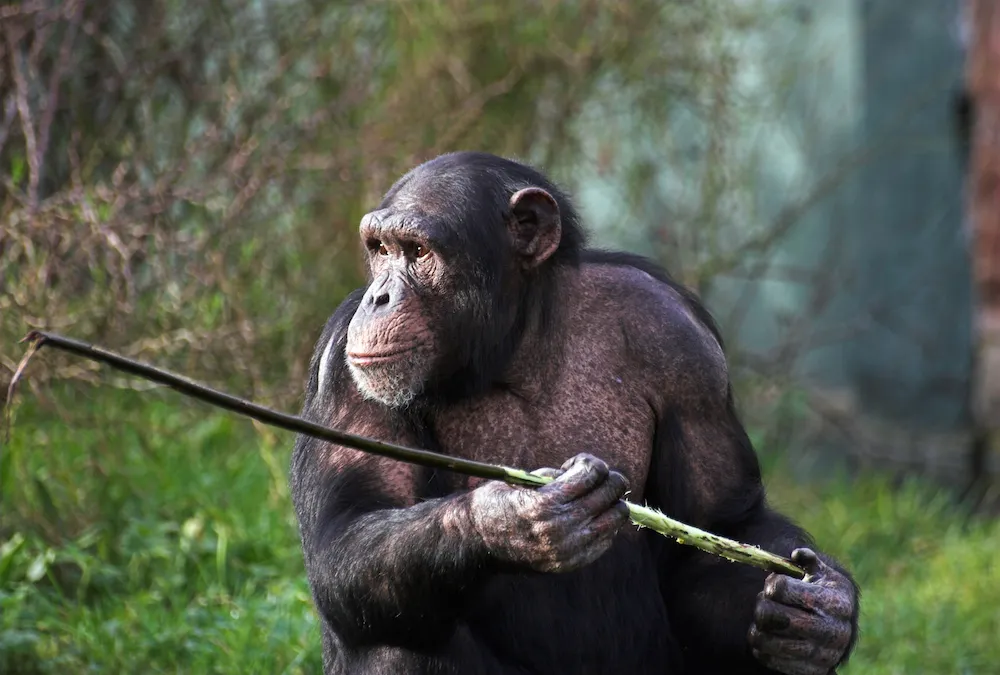
Chimpanzees Make Spears to Hunt
It shouldn’t be surprising that our closest relative, the chimpanzee, is also highly skilled at making and using tools. In fact, we could make an entire list just from tools that chimps have perfected. The apes use stones as hammers to crack open nuts and sharp rocks to cut large fruit. They tear the leaves and small twigs of branches to break into ant and termite nests. These sticks are then used to extract bugs from the mound. The chimp’s ability to sharpen sticks into spears by breaking and chewing one end may be its most striking example of tool use. The spears are then used for hunting small animals, like bush babies. Chimps are the only non-human animals that are known to make and use spears for hunting.

Dolphins Carry Sponges To Help Forage For Food
Dolphins have a reputation for being highly intelligent and social. But it turns out that the adorable marine mammals are also skilled tool users, at least in the case of the Shark Bay bottlenose dolphins. In the 1980s, a group of researchers in Shark Bay, Australia, noticed some of the dolphins carrying sea sponges around in their beaks. Upon closer observation, they realized this odd behavior serves a dual purpose. One is a clever tool to help dolphins stir up sand and flush out small fish to eat. The other role of so-called “sponging” is to protect the dolphins’ sensitive beaks while swimming and foraging. With the sponge over its beak, the dolphin is protected from sharp rocks, shell fragments, sea urchins, and other objects that might hurt them. Even more amazing, is that the ability seems to be a learned behavior that is passed down from mother to daughter. However, for reasons that remain a mystery, male dolphins do not seem to learn to sponge as readily as their female siblings, and the habit is rarely observed in males.
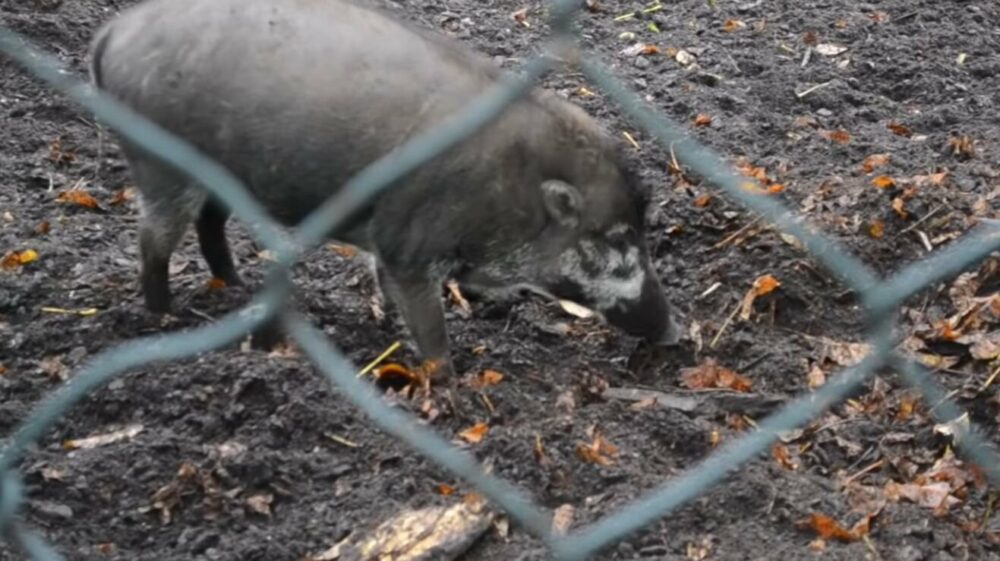
Pigs Can Learn (and Teach Others) How To Shovel
Until recently, we had no idea that pigs knew how to use tools. That is until a researcher spotted Visayan warty pigs in a Paris zoo using sticks and bark to shovel dirt and leaves out of their nests. After observing pigs for two years and recording hours of footage, researchers found that the pigs only used the shovels when they were building nests as shelters for soon-to-be-born piglets. In the wild, expecting Visayan warty pig mothers build their nests with their snouts. But in captivity, the animals seem to prefer tools. Like dolphin sponging, this appears to be a learned behavior that female pigs teach their daughters. A male pig attempted to mimic the behavior but seemed unable to master it. Scientists are not surprised to find that pigs are able to use tools. The animals are highly intelligent and, despite their reputation as slobs, are actually quite tidy.
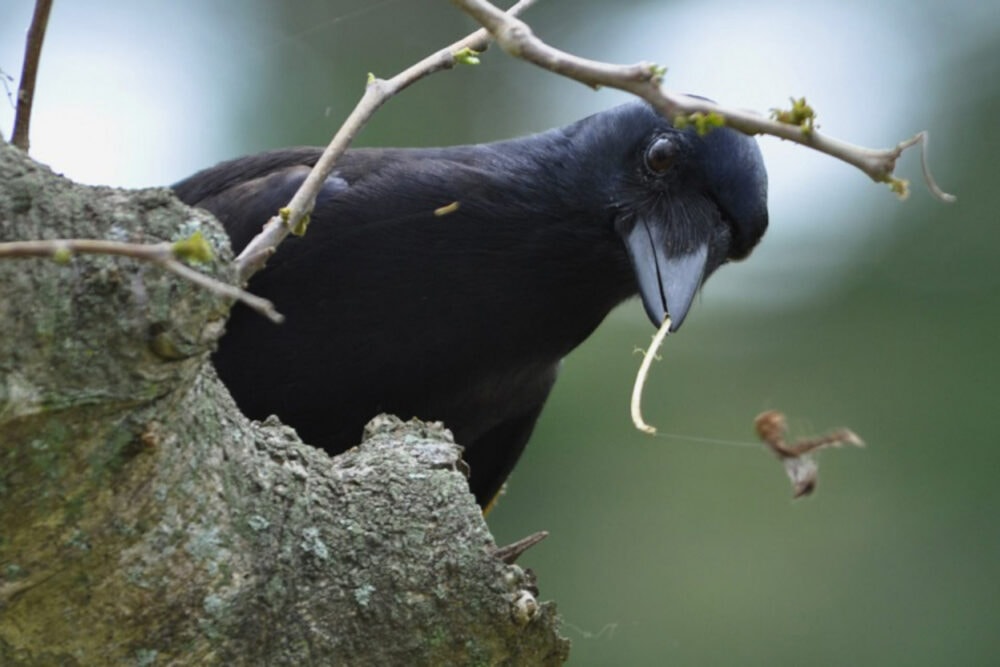
Crows Make Hooks To Catch Food
Mammals aren’t the only animals capable of using tools. Crows are so smart and good with tools that it’s a little scary. New Caledonian crows craft several different tools that they use to hunt prey. Perhaps most impressive of these tools are the hooks the birds make by bending twigs (or wires, in captivity). Crows hold the hook tightly in their beaks and use them for fishing beetle larvae and other treats out of any space they can’t reach with their beaks or talons. The tools seriously speed up the hunting process. Using the hooks, crows can catch food up to 10 times faster than crows without hooks. And crows seem to be aware of how valuable their tools are because they are more likely to hide hooks than any other tool that they use. Amazingly, the birds can even recognize and use premade hooks. Crows are believed to be the only animals (other than humans) who know how to make and use hooks for hunting.

Gorillas Test Water Depth With Sticks
If you needed to cross a body of water, what’s the first thing you would do? If you’re not a skilled swimmer, chances are you’d want to check how deep the water is before jumping in. A chance encounter in the forests of the Republic of Congo suggests that gorillas might do the same. A research team from the New York City-based Wildlife Conservation Society noticed a gorilla using sticks to test the depth of the natural pool before wading in. That marked the first time a gorilla was observed using a water stick, or any tool, in the wild. The researchers who witnessed the extraordinary event were amazed by how cautious and “intuitive” the gorilla’s actions were. “What’s fascinating…is the similarity between what these creatures have done and what we do in the context of crossing a pond,” said Dr. Thoma Breuer, the lead researcher on the team who captured an image of the tool use in action. Like humans, gorillas are not natural swimmers, although they have been taught to swim in captivity.
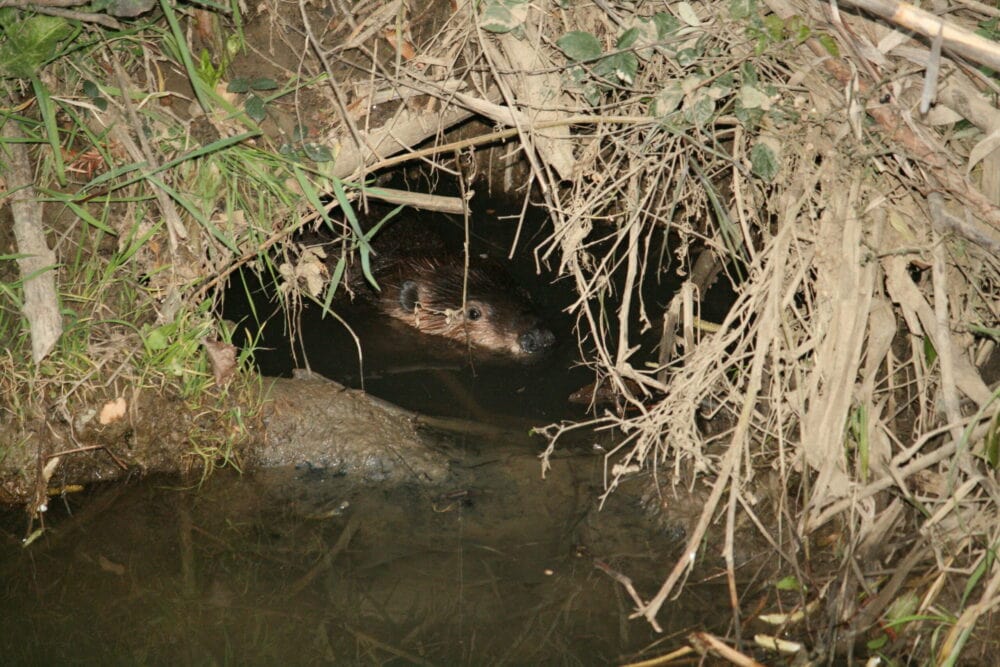
Beavers Build More Than Just Dams
Perhaps the most famous tool-makers in the animal kingdom, beavers are well-known for their ability to build massive dams that slow water and make it easier for animals to swim and catch food in the water. But dams aren’t the only thing these unique rodents know how to build. Beavers also construct complex lodges with multiple underwater tunnel entrances. The lodges are like little islands, safe from land predators but close to the water plants that make up the beaver diet. Like beaver dams, the lodges are built from sticks cut with the beaver’s powerful front teeth, sticks, rocks, and mud and are well-insulated against cold and water. Lodge floors are typically covered in grass or wood chips to keep them dry. The nest even has air holes in its dome roofs to provide ventilation.

Elephants Can Disable Electric Fences With Stones
Widely considered to be the most empathetic animals, elephants are also surprisingly skilled at using tools. Electric fences are used in many regions to contain elephants or keep them from crossing onto human-inhabited land. But these brilliant animals quickly discovered that they could safely touch (or tear up) the fences with their tusks, which don’t conduct electricity. Even more impressive are the elephants who used tools to break the fences. In her memoir, famed elephant researcher Dr. Joyce Poole described how some elephants would drop logs or rocks on the fences’ wires to disable them. Other researchers have observed elephants plug up a water hole with bark to prevent other animals from drinking from them. The elephants returned later to their hidden water hole to drink.
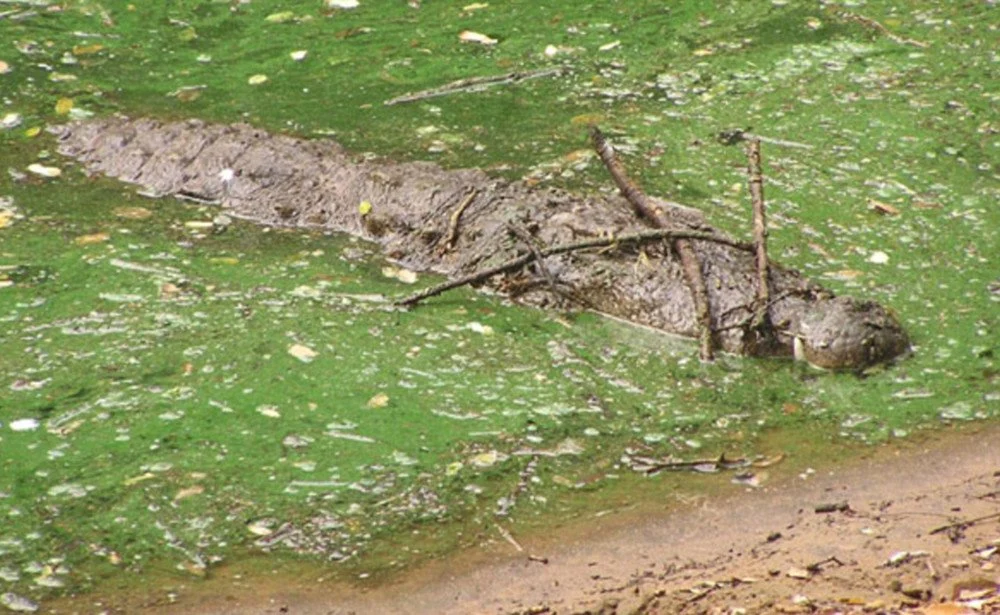
Alligators and Crocodiles Lure Birds With Sticks
Many animals use camouflage to go unseen by potential prey, but alligators and crocodiles might have the most creative use of disguise. The American alligator and the mugger crocodile, native to south Asia, balance sticks on their heads just above the water’s surface. Then, when birds seeking building materials for their nests attempt to collect the floating sticks, the reptiles snap them up. These gators and crocs are so in tune with bird behavior that they wait until the bird’s breeding season, when they build nests, before attempting to lure birds. Researchers believe this is the only example of a non-human animal using a lure to catch its prey (other than the deep sea, angler fish).

Sea Otters Crack Open Shells With Rocks
Sea otters are unique among marine mammals for their ability to use stone tools. The aquatic critters are often seen using jagged rocks to crack open the shells of the prey. Clams, crabs, abalone, and mussel shells are no match for a rock-wielding otter. Sea otters catch their food in the water before swimming to the surface to enjoy their meal. Once above water, they float on their backs, balancing the shelled animal on their chest, and use their stone anvil to smack the shell until it cracks. The otters even have a special pouch that they use to carry their favorite smashing rock. In the folds under their arms, sea otters have pockets of loose skin for storage.
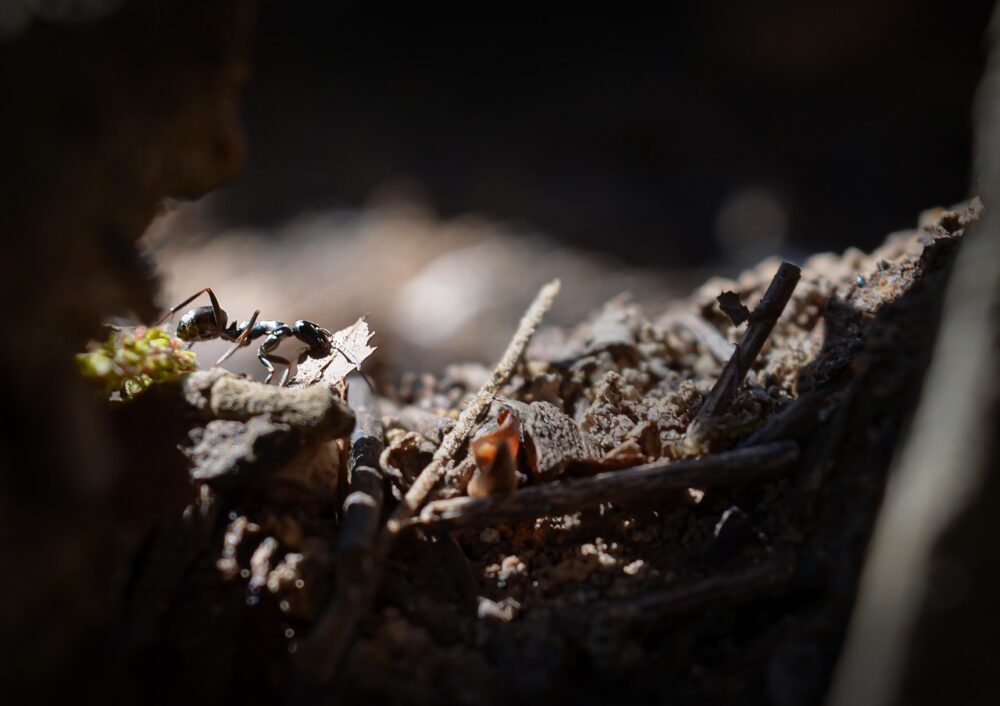
Some Ants Drop Stones On Their Rivals.
Tool use isn’t limited to vertebrates. Even insects have been known to use simple tools. For example, some species of ants use pebbles or sand to block or hide the entrance to their hill and keep invaders out of their colony. Not content to always play defense, cone ants use a similar technique to block the entrances of hills of other ant species. These ants have been observed dropping small rocks down the tunnel entrances of nearby ant colonies, trapping their enemies inside. This stone-dropping tactic prevents the rival ants from competing for food. Cone ants work in teams to block rival colonies and are often so successful that they end up depleting the other species’ population.
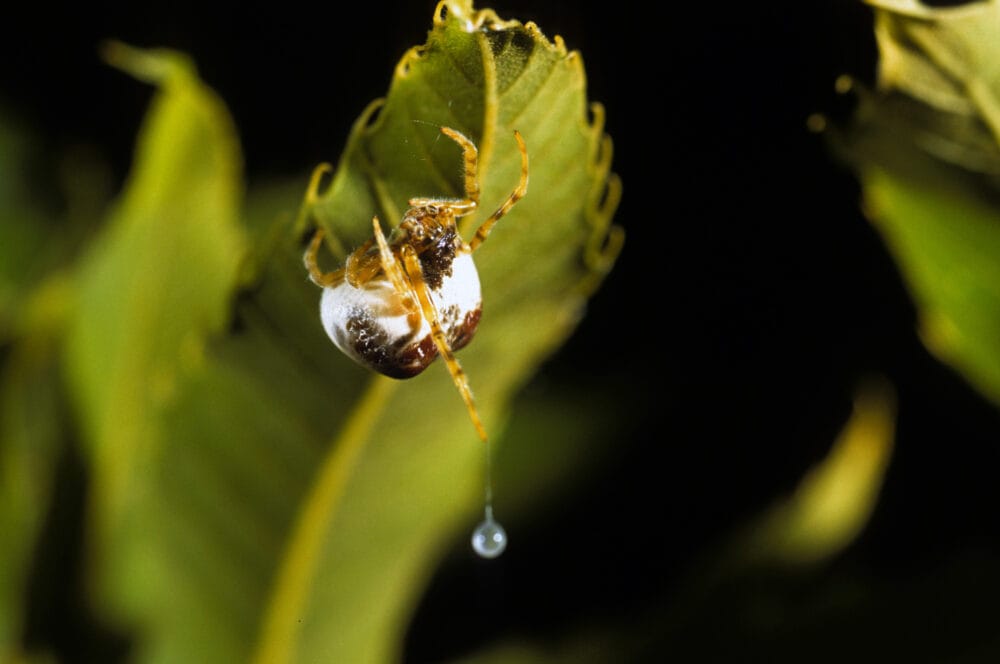
Bola Spiders Build Traps to Catch Insects
Many spiders trap their prey in webs or orbs made of silk. But the bola spider has an unusual hunting technique that could give Spiderman a run for his money. Rather than spinning a large web, bola spiders hang a single strand of silk with a sticky blob on the end called a bola. The spiders lure their unfortunate prey, typically male moths, to them by emitting a scent that resembles the smell of female moth pheromones. Bola spiders then skillfully swing the sturdy silk line and use it to capture their prey. Some bola spiders produce silk lines with multiple bolas along them, apparently aiming to increase the likelihood of catching moths.
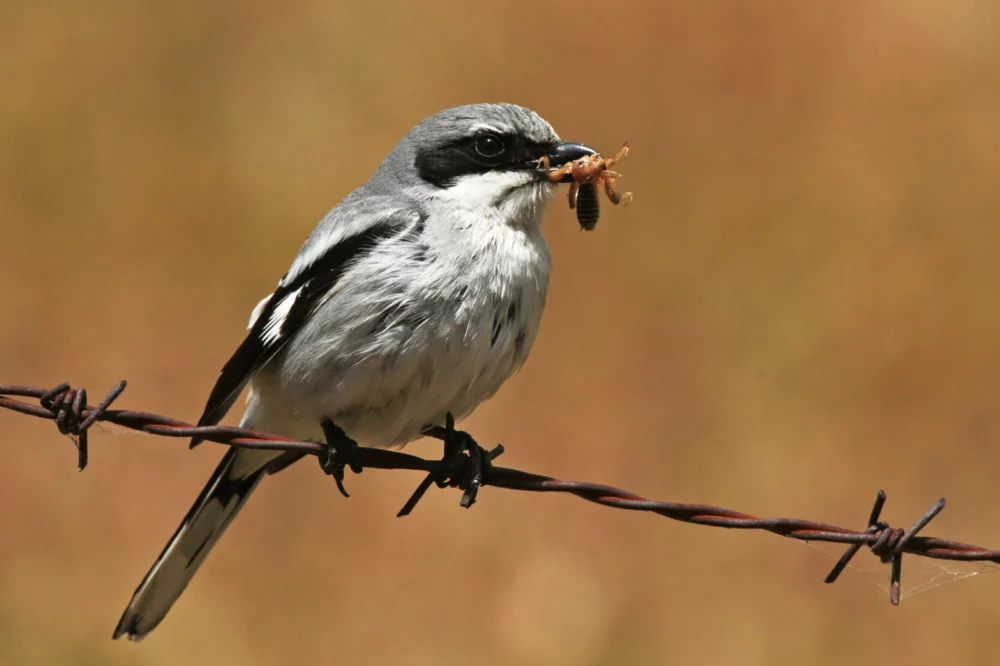
Shrikes Impale Their Prey on Thorns
Don’t let their adorable appearance fool you. Shrikes have a hunting technique that’s as vicious as it is effective. The ferocious predator, which has been nicknamed the butcherbird, kills much of its prey by forcefully snapping their necks. Once dead, the birds impale the body on sharp objects, like thorns and twigs. In some cases, these killing machines have even been observed using barbed wire to impale the insects, rodents, birds, and small reptiles that make up their diet. Shrikes are extremely proficient hunters, able to easily take down animals that are as large or even larger than their own tiny bodies.
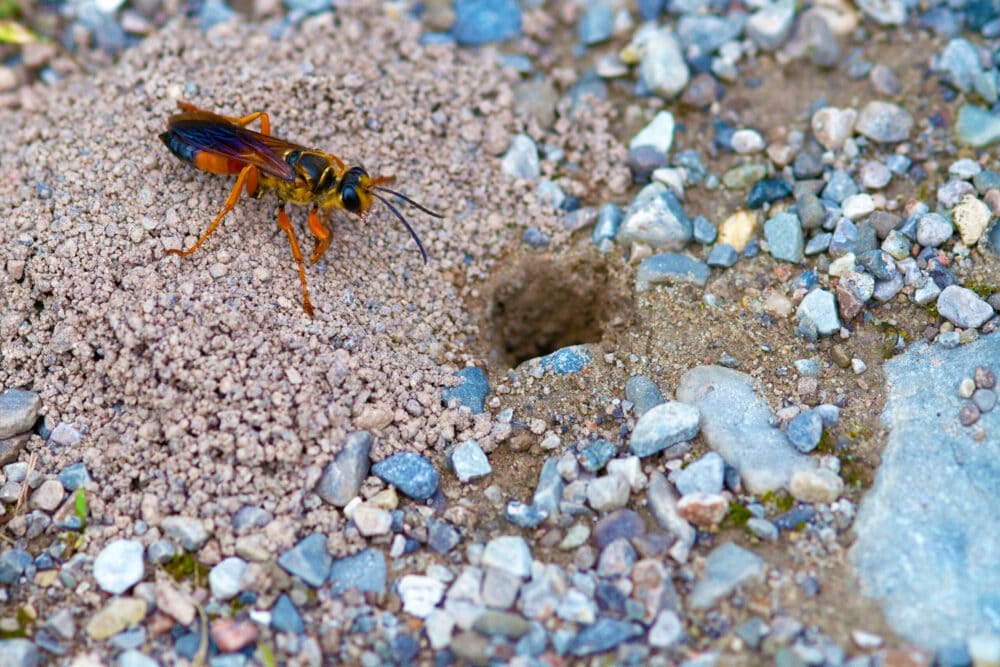
Wasps Use Sand and Pebbles For Security
Like most animals, wasps take protecting their young very seriously. Several species of wasps build their nest by burrowing tunnels in the sand. The wasp stings and paralyzes an insect that will serve as soon-to-hatch babies’ first meal. The still-living prey is dragged back to its nest, where it is placed in the nest with the wasp’s egg. The wasp then seals their nest with sand or small rocks to prevent predators from feeding on the eggs or their intended meal. After hatching, the larva feed on the paralyzed prey and, once mature, must burrow its way out of the tunnels.
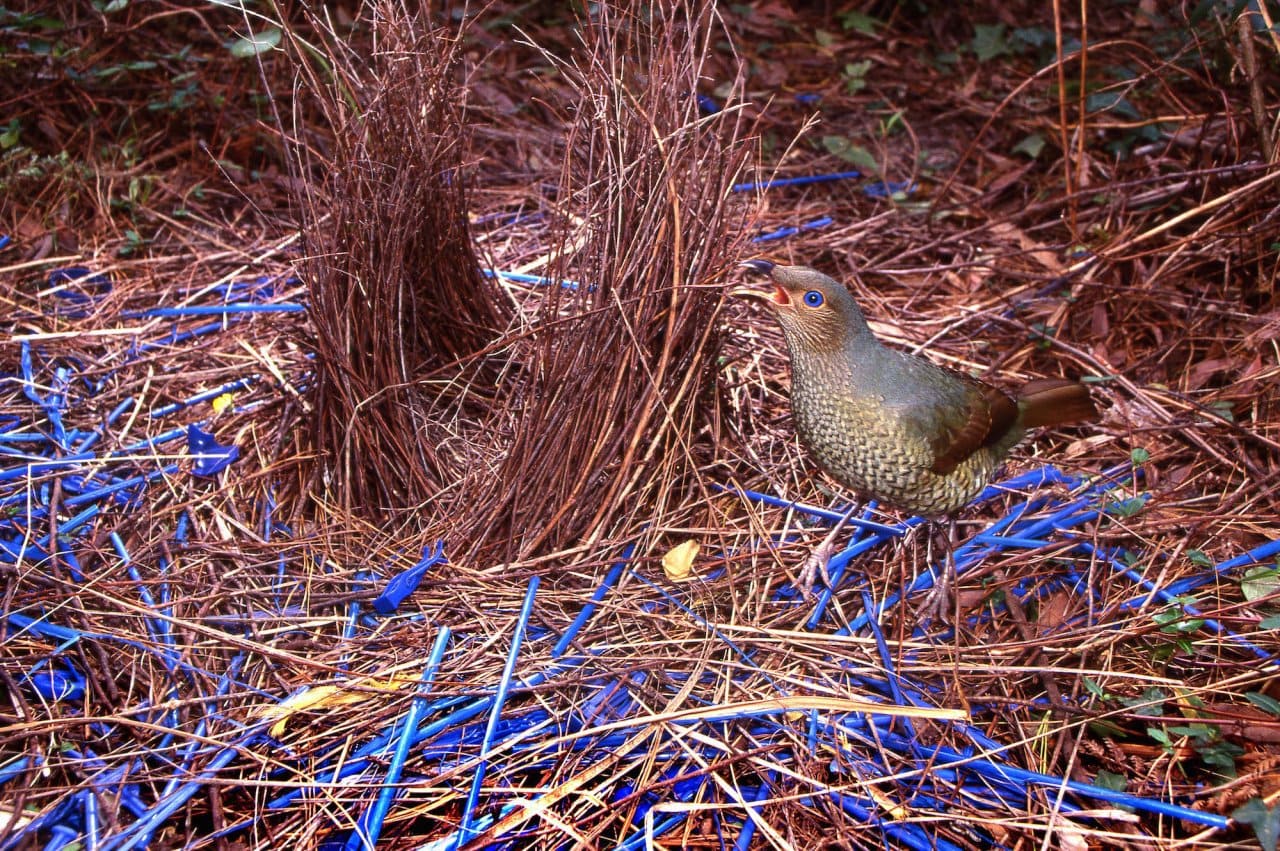
Bowerbirds Decorate Structures to Woo Mates.
Bowerbirds prove that grand romantic gestures aren’t just for romantic comedies. The bird native to Australia and New Guinea build elaborate structures, not for shelter but for love. The male bowerbirds’ courtship ritual includes building a bower, a hut-like nest with walls made of twigs, leaves, straw, and mud that sits on the ground. The bird collects colorful materials like bottle caps, shells, broken glass, and berries to decorate the bower’s inside and surroundings. Bowerbirds are also notorious thieves, stealing materials from other birds’ bowers. The purpose of all this work is to attract the attention of a potential mate. Unlike a regular bird’s nest, the purpose of a bower is used only for mating, not for laying eggs or sheltering young.
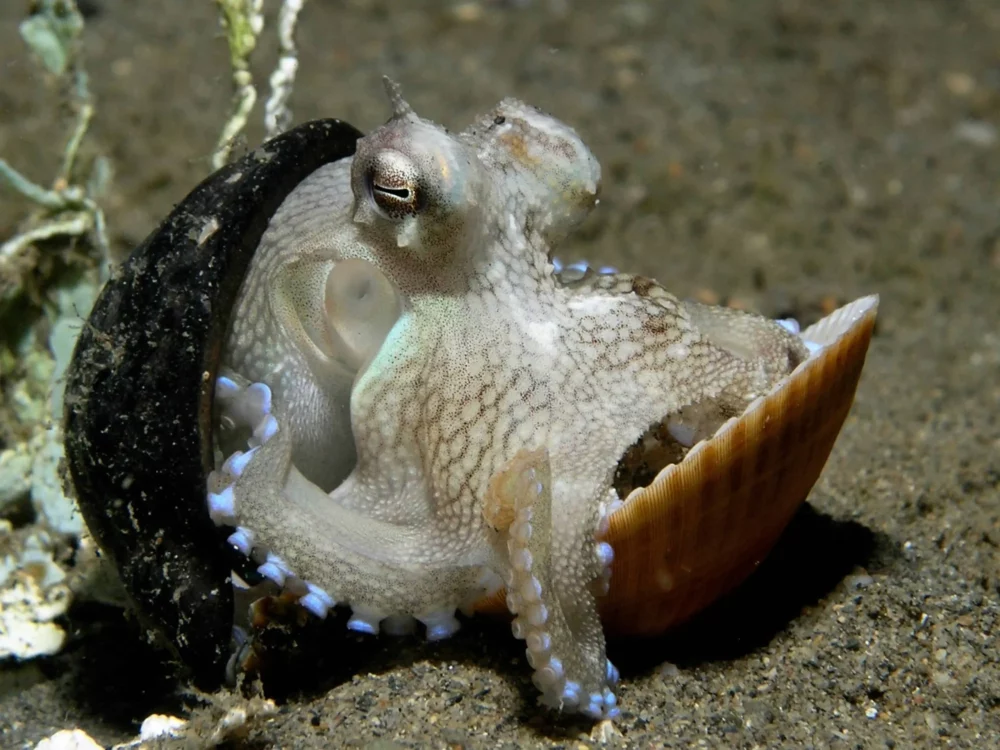
An Octopus Will Wear Coconut Shell Armor
Between shape-shifting, camouflage skin, and ink release, octopuses have plenty of quality defense mechanisms. Still, their bodies are boneless and completely soft, other than their beaks, making them extremely vulnerable to injury. The veined octopus has found a clever way to protect itself from injury: a makeshift suit of armor made from discarded coconut shells. The cephalopod stack and carry two halves of a coconut shell under its body. At a moment’s notice, the shells are produced, and the octopus climbs inside, closing the two halves around its body. Researchers who studied the octopus’s tool use were stunned by its ability to plan ahead for protection against future attacks.
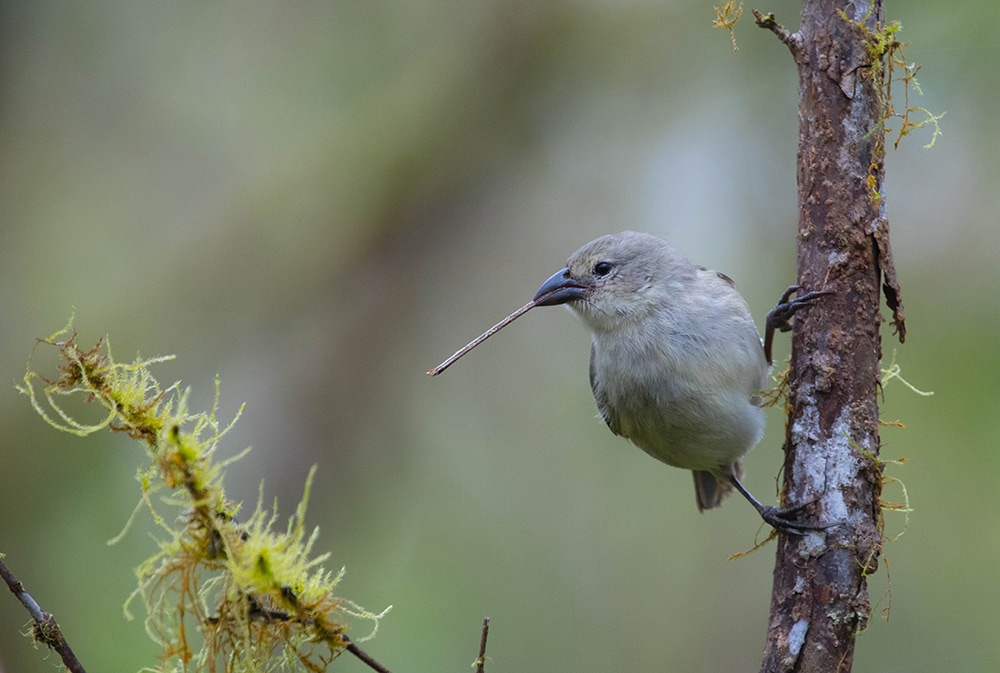
Woodpecker Finches Use Cactus Spines To Drag Bugs From Trees
The woodpecker finch’s short tongue makes it difficult for the bird to eat insects that live in tree trunks. Rather than go hungry or find a new food source, these finches snap off cactus spines and use them to impale or drag out their prey. The bird may also use twigs to extract bugs and larvae from underneath the bark. Woodpecker finches are more likely to use tools to forage during the dry season and in arid climates where food is scarce. As much as half of the food may be collected using these tools, making the birds more frequent tool-users than chimpanzees and any other primates except humans.

Tiny Degus Can Learn How to Rake
With few exceptions, rodents aren’t big tool users. Beavers and their dams are one exception. Degus are another. In a study in Japan, degus in a lab could be trained to use rakes to grab food. The rodents were placed on one side of a fence with food on the other side. After providing the degus with a rake, they trained them to use it to pull seeds to their side of the fence. After two months of practice, all of the degus were able to use the rakes. The experiment is the first time rodents have been trained successfully to use any tool. The same technique has been used to train other animals that don’t use tools in the wild.

Orangutans Learn To Use Stone Hammers and Saws.
Orangutans in captivity use a variety of tools with very little intervention from humans. In one experiment, orangutans used stone flints to cut open a food container and to open a puzzle box. Captive orangutans have also been observed for years using handsaws and axes. This behavior is very different from the orangutans in the wild. However, wild apes do use tools to perform simple tasks. For example, orangutans have been observed using sticks to scrape the seeds out of fruit, while others use leaves to make themselves sound more formidable.

Honey Badgers Use Tools To Climb.
Honey badgers are skilled climbers that have frequently been caught on video using tools to reach high places. In captivity, the clever animals will stack mud, rocks, sticks, and anything around them to help them climb. A video that went viral in 2014 featured a honey badger can be seen using everything from logs and stones to rakes, shovels, and tires to climb out of its enclosure. In the wild, honey badgers have also been observed carrying logs to trees to get out-of-reach food, including honeybee hives, which the animals are particularly fond of. Honey badgers are so determined to reach honey that some honey farmers have to hang their hives away from any tools they can climb.
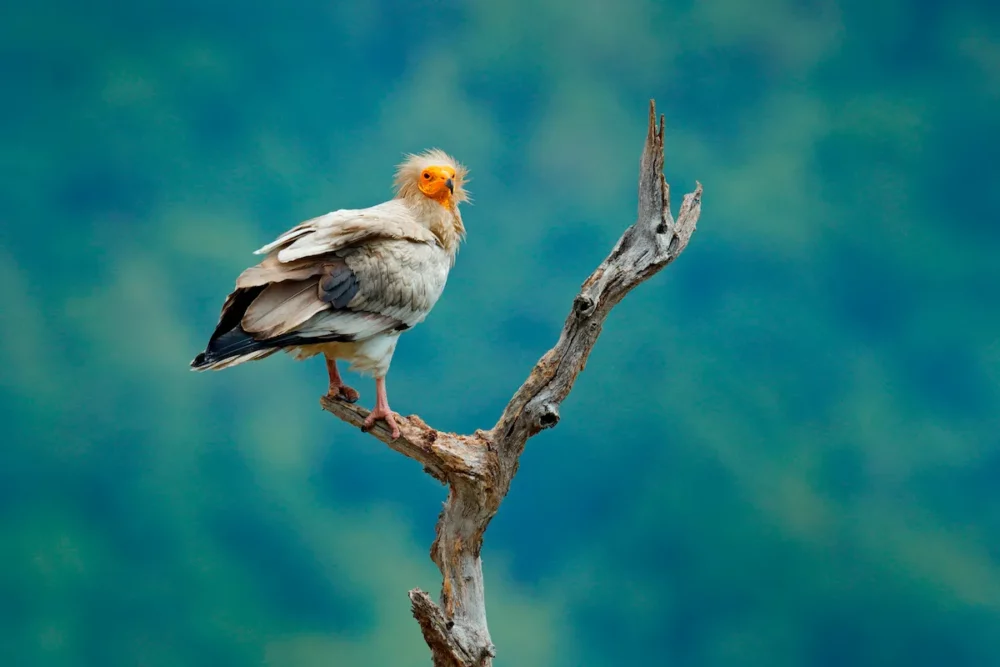
Vultures Use Tools to Roll Wool and Open Eggs
The Egyptian vultures use a few tools to make their lives easier. One of the mainstays of the bird’s diet is the giant ostrich egg. The egg has an extremely thick shell that usually requires a hammer or drill for humans to crack. Egyptian vultures solve this problem by making their own hammer using flat, rounded rocks held tightly in its beak to pound the eggshell until it cracks. The birds have also been observed engaged in the unusual activity of rolling wool with sticks. The wool is used in the construction of the vulture’s nest.

Puffins Make Their Own Back Scratchers
In 2014, a researcher near Wales spotted a puffin using a stick to scratch itself. But it would be another four years before she could finally capture the action using motion capture cameras in Wales and Iceland. The camera recorded two different puffins hundreds of miles apart, scratching their backs and chest with sticks. Tool use had never been observed before in the birds, which, like other seabirds, had not been considered to be particularly intelligent. Parrots are the only other birds that have been observed using sticks to scratch. The researchers believe that the difficulty in observing seabirds may have caused us to miss other signs of tool use. “‘Seabirds’ cognitive capacities may have been considerably underestimated,” they wrote.

Wrasses Smash ShellfishAgainst Rocks to Open Them
A species of wrasse, a family of brightly colored tropical fish, was the first fish confirmed to use tools. In a video captured in 2011 by a diver in the Great Barrier Reef, the orange-dotted tusk fish can be seen digging a cockle out of the sand and carrying it some distance in its mouth to a large rock. The fish then proceeded to slam the shellfish against the rock until it opened. Similar behaviors had been described in other wrasses, but the images represented the first photo evidence of the ability. The images were published in a scientific journal, and the researchers stressed that the discovery opened a world of possibilities. “We really need to spend more time filming underwater…It really is the final frontier down there,” they said in a press release.

Bears Use Tools To Climb and Groom
Grizzly bears aren’t just fearsome hunters. They’re also highly-intelligent creatures that can use tools to acquire food. In a 2014 Washington State University study, researchers found that when the bears were presented with treats that hanging was just out of reach, they quickly figured out how to solve the problem. They pushed tree stumps under the dangling treats, then climbed on top to reap the rewards. The study wasn’t the first evidence that bears can use tools, although it was the most compelling. Brown bears have been observed using rocks covered in barnacles as part of their grooming regimen.
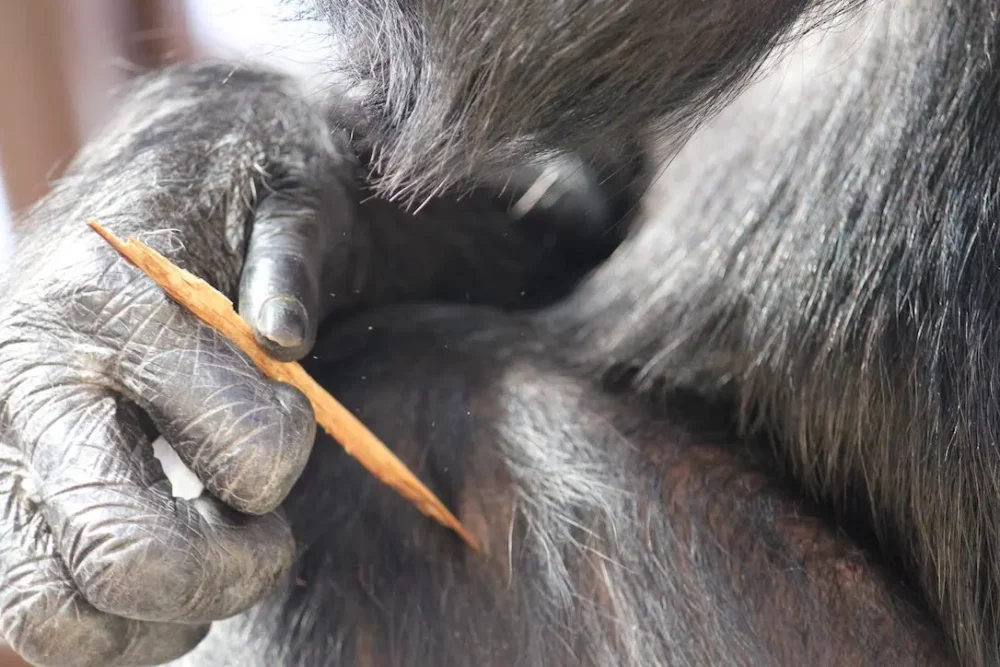
Many Primates Use Loads of Grooming Tools
Grooming is a common trait across animals of all types. But primates are among a few animals that use tools to aid their grooming routine. Mandrills may look menacing, but the apes actually spend a good amount of time fussing over hygiene. They fashion a tool out of grass and sticks to clean out their ears and prevent ear infections. Some mandrills use whittle twigs to clean under their nails. Macaques in Thailand have been known to swipe hair straight from people’s heads to use as floss. Chimps use small sticks to groom their skin, and bonobos sometimes use “sponges” made of chewed leaves and moss.
Where Do We Find This Stuff? Here Are Our Sources:
11 Amazing Animals That Use Tools
10 Animals That Use Tools
13 Remarkable Animals That Use Tools
9 Animals That Use Tools (This is Amazing!)
7 Animals That Use Tools in Innovative Ways
Which animals use tools? 7 Unexpected Animals That Use Tools
